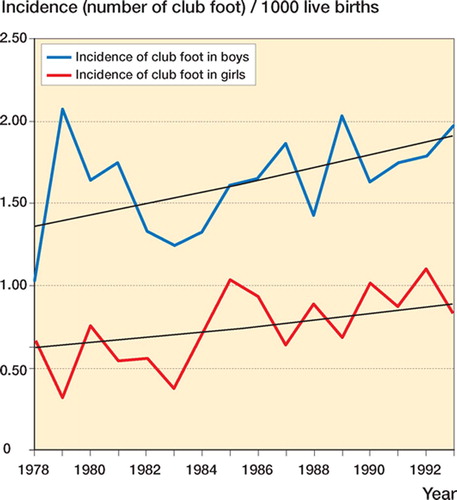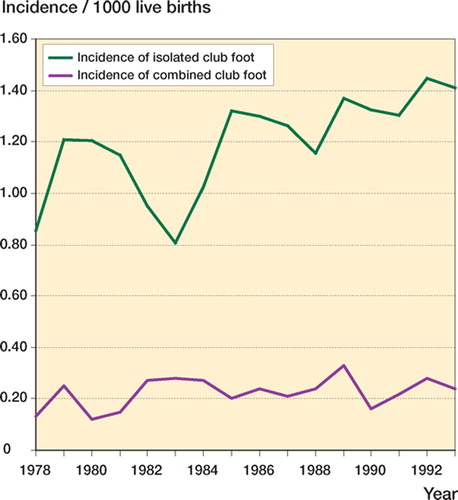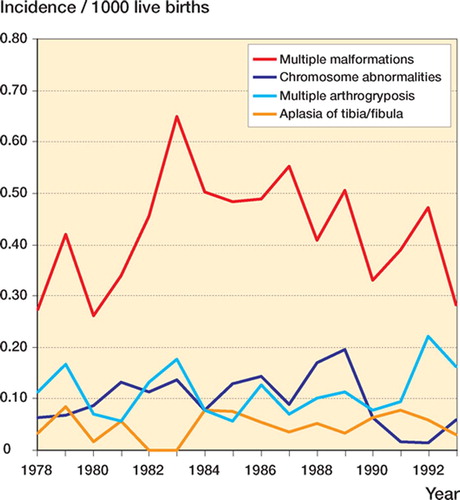Figures & data
Table 1. The total numbers and incidences (n/1000 live Incidence (number of club foot) / 1000 live births births) of inborn club foot in Denmark during 1978–1993 among 936,525 births. Isolated cases were defined as foot deformities in children with no chromosomal abnormalities, syndromes, multiple malformations, multiple arthrogryposis or aplasia of the tibia or fibula. Combined cases were foot deformities in children with one or more of these conditions
Figure 1. The yearly incidence (n/1,000 live births) of isolated club foot (CF) in Denmark 1978–1993 among 936,525 births. The smooth curve is the model-based (estimated) incidence in the model with constant boy-girl ratio. There was a significant increase in incidence during the period for both sexes, and also for boys and girls separately (p < 0.001).

Figure 2. The yearly incidence (n/100,000 live births) of club foot (CF) in Denmark 1978–1993 among 936,525 births, divided into cases of isolated CF and cases of CF combined with chromosomal defects, multiple malformations, aplasia of the tibia/fibula, or multiple arthrogryposis.

Figure 3. The yearly incidences (n/1,000 live births) among 936,525 births in Denmark 1978–1993 of children with chromosomal abnormalities (dark blue), multiple malformations (red), aplasia of the tibia or fibula (yellow), and multiple arthrogryposis (light blue). There were no significant changes over time.

Table 2. The numbers and (in parentheses) incidences (n/1000 live births) of isolated club foot in each county in Denmark 1978–1993, among 936,525 births. The standard morbidity ratio (SMR) in each county for clubfoot is listed followed by 95% CI
Table 3. The incidences of isolated clubfoot (n/1000 live births) in Denmark 1978–1993 among 936,525 births, related to population density (number of inhabitants/km2 divided into 10 groups). SMR = standard morbidity ratio (observed number/expected number)